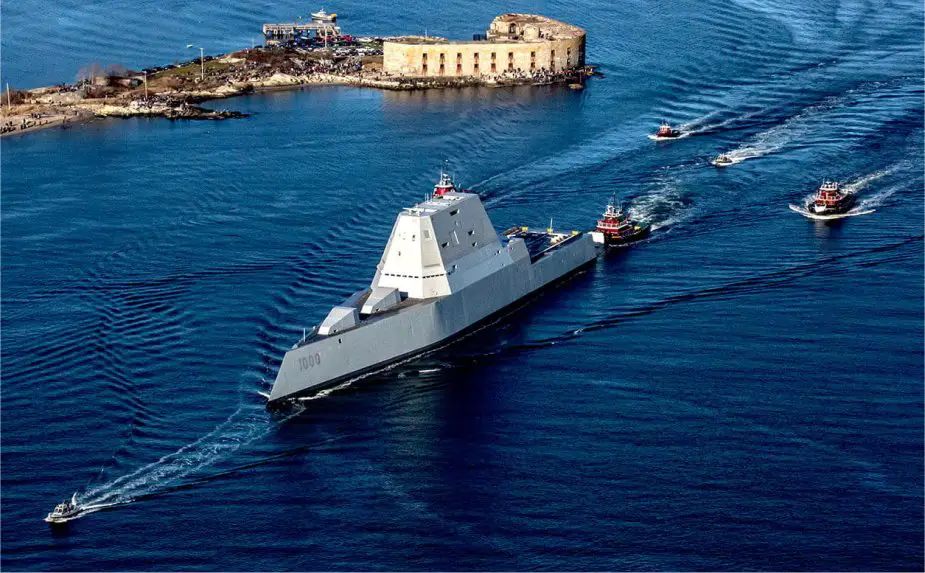According to a PR published by Raytheon on April 21, 2022, the U.S. Navy awarded Raytheon Missiles & Defense, a Raytheon Technologies business, an activation, sustainment, and modernization contract for $483 million with options, if exercised, totaling $1.68 billion across five years.
Follow Navy Recognition on Google News at this link
 Zumwalt-class destroyer USS Zumwalt (Picture source: Raytheon)
Zumwalt-class destroyer USS Zumwalt (Picture source: Raytheon)
Under this contract, Raytheon Missiles & Defense will provide the U.S. Navy services and professionals to complete the activation and fleet introduction of the three Zumwalt-class destroyers, while continuing to develop technology and warfare capabilities.
Additional services will include design, integration, test and evaluation, system upgrade and replacement, logistics product development, configuration management, and training systems.
The Zumwalt-class destroyers recently achieved initial operational capability in December 2021, with the inaugural fleet employment of USS Zumwalt scheduled for later this year.
The Zumwalt-class destroyer is a class of three United States Navy guided-missile destroyers designed as multi-mission stealth ships with a focus on land attack. It is a multi-role class that was designed for secondary roles of surface warfare and anti-aircraft warfare and was originally designed with a primary role of naval gunfire support.
The class design emerged from the DD-21 "land-attack destroyer" program as "DD(X)" and was intended to take the role of battleships in meeting a congressional mandate for naval fire support.
The ship is 600 feet (180 m) in length, with a beam of 80.7 feet (24.6 m) and displacing approximately 15,000 tons. Michael Monsoor has a crew size of approximately 148 officers and sailors; she can make speed in excess of 30 knots (56 km/h; 35 mph).
The DDG 1001 is armed with 20 MK 57 VLS (Vertical launching System) modules, with 4 vertical launch cells in each module, 80 cells total. Each cell can hold one or more missiles, depending on the size of the missiles.



